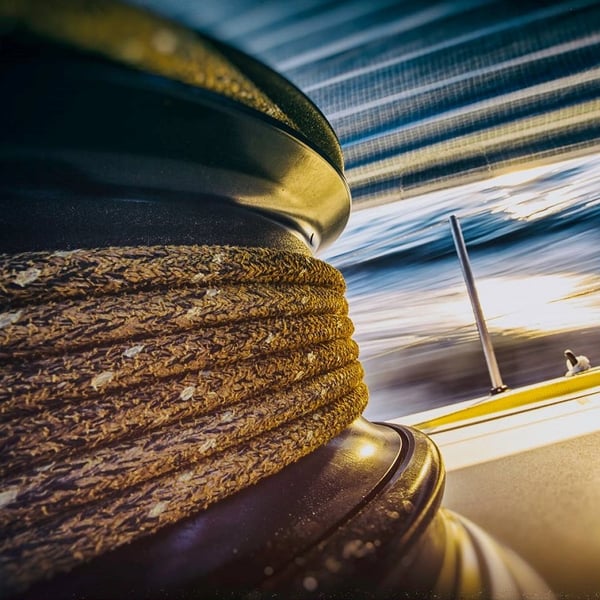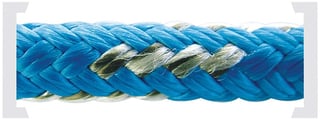
There are so many great performance ropes to choose from...... but where to start? Based on your sailing level/style, understand some of the basic principles so you know what you are looking for.
Before you start
There are a few basic questions you will need to answer before it is possible to determine the correct running rigging for your needs:
What size is your boat?
Once you get above a certain boat size (around 45ft) you should consider Dyneema as your baseline specification, but below 45ft, lower priced, polyester ropes can still deliver excellent performance and give you a wider range of options.
What type of boat do you have?
Multihulls have different needs to heavy, traditional cruising boats or lightweight, modern club racers and your boat type will have a significant impact on the demands placed on your running rigging. The impact different hull types will have on overall rigging loads, responsiveness and sensitivity to stretch will affect the cost vs benefit of the different running rigging options.
What are your specific running rigging needs / objectives?
This is the most critical consideration and one that is important to think through, in detail, for each of the main rope applications e.g. halyards, sheets or control lines etc. Common issues are: slipping through clutches, too much stretch, chafing points, aggressive winch drums, problems with small masthead sheaves or the need to reduce weight or windage. There are a large variety of rope finishes and treatments which can be tailored to manage many of these issues and help zero in on the right rope to meet your specific needs.
Decision making process
As with most things in life: "you get what you pay for" and running rigging is no exception. For each of the main running rigging applications (sheets, halyards, control lines etc) there will be 3 levels to your available options and decision making process:
- Core - Appropriate core groups to meet general needs
- Braid - Specific finishes to deal with any known issues you have to manage
- Budget
Core
At the lower end of the performance spectrum there are some excellent polyester core ropes available which make them attractive as a starting point for cruising boats under 45ft.
Next on the spectrum comes some blended cores which combine basic grade Dyneema® with polypropylene, gradually moving up to full Dyneema® cores. The blended cores tend to be good for 45-65ft cruising boats, beyond which the performance minimum should be an SK78 core.
Larger or more performance-orientated boats should opt for a Dyneema® core. There are many different qualities of Dyneema® on the market but the two primary cores used in performance ropes today are SK78 and SK99. A variety of finishes are applied to the core fibres to increase performance and stiffness and rope performance and price generally increase as follows:
- SK78 plus a polyurethane coating
- SK78 plus heat setting and polyurethane coating
- SK99 plus a polyurethane coating
- SK99 plus heat setting and polyurethane coating

Coating the core with polyurethane reduces inter-fibre abrasion and makes splicing easier. The heat setting process involves heating the fibre and pre-stretching it to ensure perfect balance across all the fibres in the core. Applying this process increases rope strength and stiffness by 15%, whilst reducing diameter by 10%.
Braid
Most rope braids use heat treated polyester as a base. Polyester fibres demonstrate high tenacity and good resistance to abrasion.
Polyester braids are lightweight, absorb minimal water and are resistant to chemical/physical agents making them ideal for a wide range of applications
Additional fibres can be used to provide the braid with different characteristics. Aramids, Technora® and Cordura® are used to increase grip and abrasion resistance for improved performance in clutches and around winches. Vectran® and Zylon® (PBO) are used to improve heat resistance in high load / speed applications.

Dyneema® can be used on its own as a base braid material, or combined with other fibres to increase wear / abrasion resistance. In some highly-specialised ropes, PBO is also used as the base braid material where greater heat resistance and stiffness are required.
There are a vast number of braid combinations available and this is where you can adapt your ropes to suit the specific needs/objectives of each of your running rigging categories.
Budget
Running rigging prices vary enormously. For example, the price range for a 10mm diameter rope, from the lowest end of the performance scale to the highest can vary from €2.50 - €50 per metre. In most cases, having completed the steps outlined above, you will find yourself with 2-4 appropriate options and ultimately your choice will come down to a price vs performance judgement based on your individual preferences.
Summary
- Be clear what you want to achieve and identify any specific challenges/issues
- Choose an appropriate core for your boat size and performance preferences
- Choose a cover that will tailor the rope to suit the application and any problem areas.
If you have any questions about ropes, please feel free to email us at support@upffront.com, or click the link below to see our full range:



